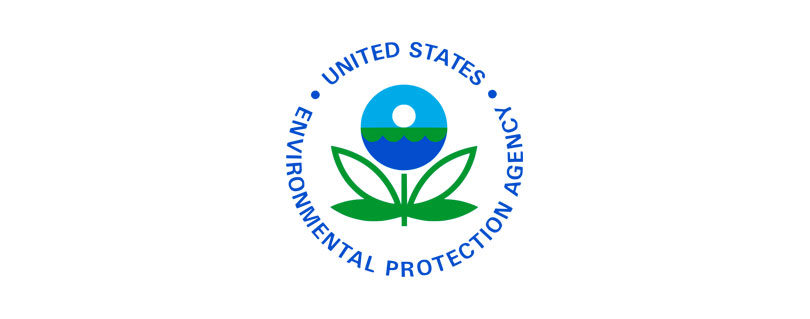EPA celebrates 50th Anniversary of the Clean Water Act on the banks of the Cuyahoga River
Publilshed by the U.S. Environmental Protection Agency (EPA)
WASHINGTON – Today, U.S. Environmental Protection Agency (EPA) Administrator Michael S. Regan, White House Council on Environmental Quality Chair Brenda Mallory, and Assistant Administrator for Water Radhika Fox, along with national and local environmental leaders, gathered in Cleveland to recognize the 50th Anniversary of the Clean Water Act on the banks of the Cuyahoga River. Administrator Regan and others discussed the progress made under the Clean Water Act and its amendments, transforming waters that were once polluted into boatable, fishable, and even swimmable treasures.
“The Clean Water Act has played a transformational role in protecting people’s health and safeguarding our natural resources for the enjoyment of future generations,” said EPA Administrator Michael S. Regan. “From establishing legal policy to driving technological innovation, the Clean Water Act has led to landmark standards, regulations, and protections for waterways across this country. Combined with other key initiatives and historic resources flowing to EPA, the Clean Water Act will continue to reduce pollution, restore and protect precious waters throughout the United States.”
“Water shapes our lives. 50 years ago, our nation came together and passed the Clean Water Act – a monumental piece of legislation,” said Assistant Administrator for Water Radhika Fox. “While we’ve made incredible progress, we need to continue to move forward, focusing the ‘North Star’ for the Clean Water Act towards ensuring every community has access to fishable, swimmable bodies of water.”
“President Biden believes every person deserves access to clean water. When the Cuyahoga River burned fifty years ago, people from all backgrounds came together with one voice to demand action,” said Council on Environmental Quality Chair Brenda Mallory. “Today the Clean Water Act ensures healthier rivers and waters, opening up new possibilities for communities nationwide. Building on the progress of the last 50 years, the Bipartisan Infrastructure Law and the Inflation Reduction Act make unprecedented investments in our nation’s water infrastructure so that we can protect clean water for generations to come.”
“Clean and affordable water is a basic human right that I have been working for since I was elected, and that John Dingell recognized long before many others did. The 50th anniversary of the Clean Water Act serves as a reminder of all the good that can get done when we work together to protect our most precious, life-sustaining resources, and an opportunity to recommit to that critical work,” Congresswoman Debbie Dingell. “When John and his colleagues finalized the Clean Water Act more than five decades ago, it was widely criticized, and even vetoed by the president before becoming law. Still today we must work to strengthen the Clean Water Act for the future and defend it from those who seek to undermine it and roll back its protections. I thank EPA Administrator Regan and everyone else who has joined us in this fight for their efforts to protect clean and safe water for generations to come.”
In the 1960s, the Cuyahoga River infamously caught fire more than a dozen times, prompting environmental action and advocacy that, in part, inspired the creation of the EPA and the eventual passage of the Clean Water Act. Under the Clean Water Act, EPA has worked with partners across the country to implement vital programs that have reduced pollution, made our waterbodies safer and cleaner, and ensured businesses that rely on clean water can thrive. Since the Clean Water Act was passed in 1972, waterways around the country have been transformed into national treasures and economic engines.
Today, under President Biden’s Bipartisan Infrastructure Law, EPA has a historic level of resources flowing to the agency to support the work under the Clean Water Act. The Bipartisan Infrastructure Law provides $50 billion dedicated to water infrastructure projects, investing through EPA’s State Revolving Funds and through the Agency’s geographic programs and National Estuary Program to protect and restore treasured national waters. The Bipartisan Infrastructure Law is the single-largest investment in water infrastructure in U.S. history to replace lead pipes, tackle emerging contaminants like PFAS, build resilient drinking water and wastewater systems, and continue to protect one of earth’s most precious and essential resources.
To commemorate the anniversary, President Biden issued a Presidential Proclamation to reaffirm the nation’s commitment to safeguarding and restoring our waters and commemorate the 50th Anniversary of the Clean Water Act. It calls upon communities across the country to observe this milestone and to recognize the significant contribution the Clean Water Act has made to restore our Nation’s waters and to consider the crucial part clean water plays in each of our lives.
Background
The Clean Water Act (CWA) establishes the basic structure for regulating discharges of point source pollutants into the waters of the United States and requires water quality standards for surface waters. The CWA made it unlawful to discharge any pollutants from a point source into navigable waters unless a permit was obtained. The EPA’s National Pollutant Discharge Elimination System (NPDES) permit program contains limits on what a facility can discharge, monitoring and reporting requirements, and other provisions to ensure that the discharge does not hurt water quality and, therefore, aquatic life or human health.
Learn more about the clean water progress EPA has made over the past 50 years by checking out our new StoryMap.
Read the full article at: https://www.epa.gov/newsreleases/epa-celebrates-50th-anniversary-clean-water-act-banks-cuyahoga-river



